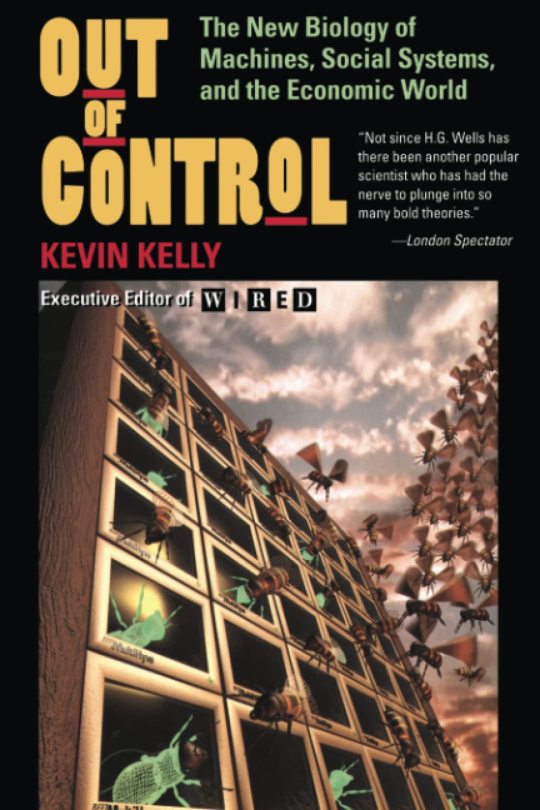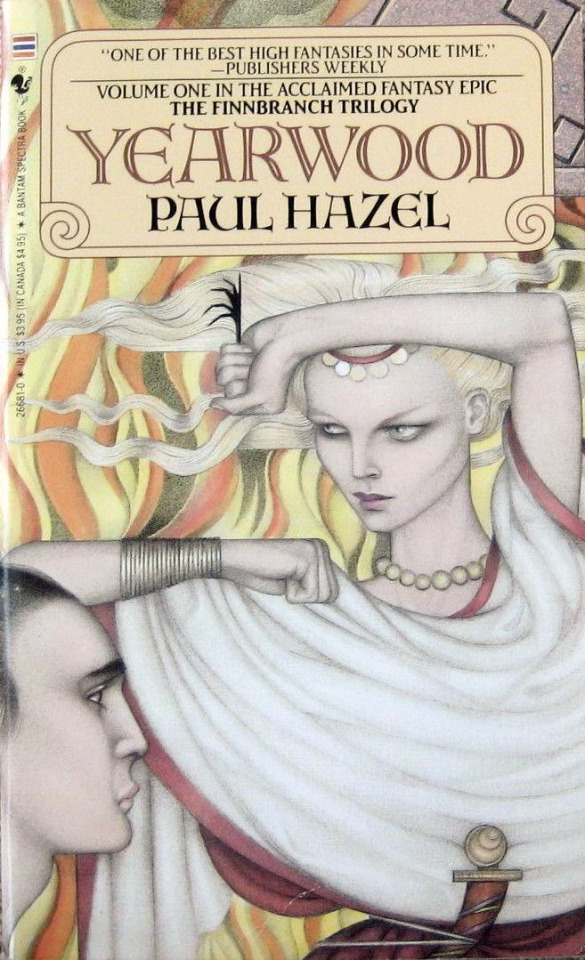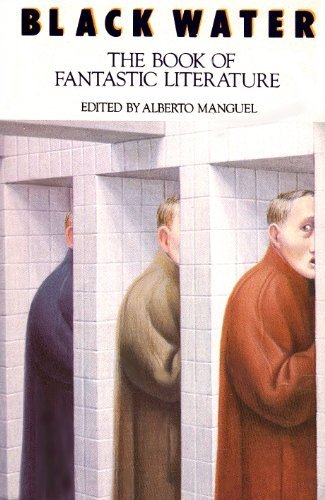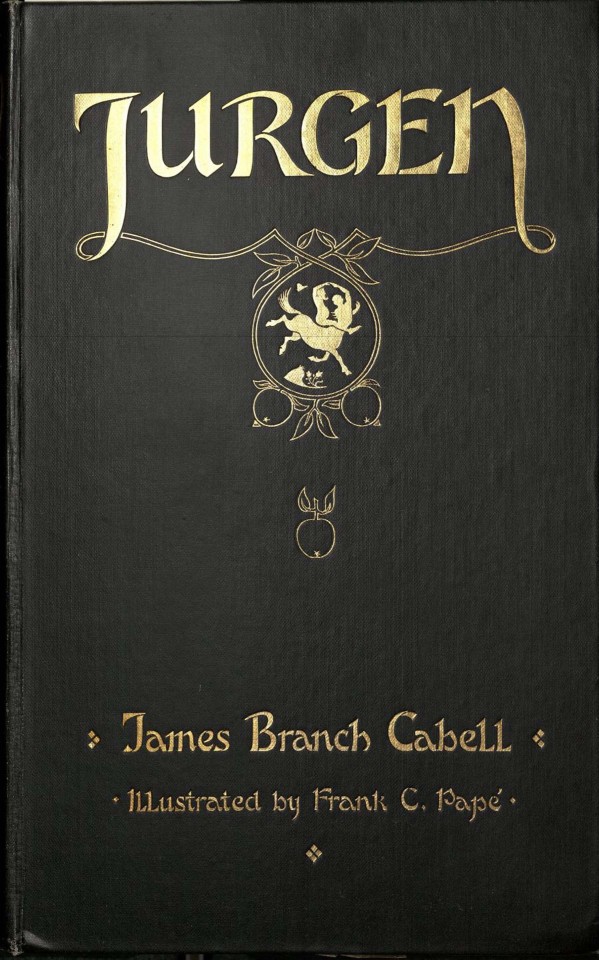#lady dilke
Explore tagged Tumblr posts
Text

Emilia Francis (née Strong), Lady Dilke
Artist: Pauline, Lady Trevelyan (née Jermyn), and Laura Capel Lofft (Later Lady Trevelyan)
Date: c. 1864
Medium: Oil on millboard
Collection: National Portrait Gallery, United Kingdom
Emilia Dilke
Emilia Francis Strong (2 September 1840, Ilfracombe, Devon – 23 October 1904), better known as Emilia, Lady Dilke, was a British author, art historian, feminist, suffragist and trade unionist.
#portrait#female#emilia francis strong#lady dilke#painting#oil painting#artwork#fine art#woman#seated#british culture#british author#british art historian#painting palette and brush#costume#drapes#interior scene#lady travelyan#laura capel lofft#19th century painting#european art
14 notes
·
View notes
Text
So I have a theory about Sugary Spire... it's ONLY a theory, and I don't have solid proof, but I feel the need to share.
So, on the official Sugary Spire website, Pizzelle made a blog post where she writes about Dilk Wilkam, the creator of Wilka chocolate bars. Wilka chocolate is apparently very popular, but Pizzelle describes it as "just chocolate-flavored wax". She also describes Dilk Wilkam as "extremely dead and extremely elusive" in the same post.
Elsewhere on the official website is a fan page for M'lass, a brown frog with a little brown hat who used to be a "local celebrity" and helped sell a wide range of products, "ranging from shampoo to chocolate chips". M'lass inadvertently ruined his career by getting caught cheating on his wife and kids with "some other frog lady": none other than Dilk Wilkam's daughter, "the princess of the Wilka brand".
Now, you're probably wondering, why would Dilk Wilkam's daughter be a frog? Take a look at this image Pizzelle posted of a Wilka chocolate bar:

Notice anything odd? Yeah, it says FROG MILK on the label. Meaning the reason Wilka chocolate is so nasty is because they use "frog milk"... whatever the hell that may be... as an ingredient. It's possible that Dilk Wilkam is either a human who adopted a frog as a daughter, or he is also a frog and this daughter of his is biological.
Now... what Pizza Tower character do we know that has a connection to frogs?
More specifically, which character has a body slam attack that makes them look very frog-like? And leaps around to great heights, like a frog? And has a long stretchy tongue, like a frog? AND they are officially stated to possess frog DNA as a nod to Jurassic Park?
That's right. My theory is that Fake Peppino, in some form or another, is the supposedly dead Dilk Wilkam in the Sugary Spire universe. Again, just a theory! I could very well be wrong! But man, if I'm right about this, that is hand-flappingly fantastic!
But if this theory is right, what does it imply? Pizzelle's blog posts paints the Wilka chocolate company in a bad light, making sub-quality, overly sugary chocolate for profit. My guess - and this ONLY a guess - is that Dilk Wilkam is still alive, and is the true mastermind behind the Sugary Spire and the creator of Coneball. If Fake Peppino/Bruno is Dilk Wilkam, that might mean he's the Pizzahead equivalent of Sugary Spire.
Meaning if Pizzahead does exist somehow in this universe, he's probably in Fake Peppino's role somehow, not as a pizza person, but as a candy person of some kind with a different name and personality.
This is mostly speculation, you must understand, so I could be very wrong about this. But... it's a fun idea to think about.
#sugary spire#pizza tower#pizzelle theodore#dilk wilkam#m'lass#fake peppino#pizza tower bruno#pizzahead#theory
25 notes
·
View notes
Text
A Vision of Learning by Lady Dilke
This week we return to the works of Lady Dilke, an early feminist, socialist, and horror writer. The following story I think is a useful parable, perhaps to be told to apprentices in the Ars Magica game to convince them to remain at the Covenant rather than going to University Thanks to Ben Tucker and his production team. *** There was once a boy who was born to all the joys of the South, and…

View On WordPress
0 notes
Photo

The Shrine of Death and Other Stories. Lady Emilia Francis Strong Dilke. London and New York: George Routledge & Sons, 1886. First edition.
Collects nine tales of the fantastic and supernatural. “When she drew nearer, she found that the walls were loaded with sculpture, and the niches along the sides were filled with statues of the wise men of all time; but at the corners were four women whose heads were bowed, and whose hands were bound in chains.”
31 notes
·
View notes
Text

'And the castle in which she dwelt was a prison to her; and sometimes sudden fits of gusty passion would overtake her, for weariness grew to hate, and hate to wrath'
-Lady Dilke
Art by Edward Burne-Jones
68 notes
·
View notes
Text
Elizabeth Bowden - Ship’s boy
I promised you all that I would present two female Sailors yesterday. Now I didn't manage the second lady because I had misplaced the court martial report. But here she comes.
There is not much to say about her as she is a bit of a mystery like William Brown. But - and here's the big but - we wouldn't know anything about her if it wasn't for a court martial on 2 October 1807 aboard HMS Salvador del Mundo against the first lieutenant of the ship she was serving on, the Sloop Hazard. Now before I get to this case - there is a huge trigger warning here, because this is about child abuse. if you have problems with this, in any form, please read no further.

Cabin Boy, by Thomas Rowlandson 1799 (x)
The court martial was convened because 22-year-old Lieutenant William Berry was accused of sodomy and buggery. His victim was under 14 year old Thomas Gibbs, ship's boy 2nd class. (The fact that the boy must have been under 14 years of age is shown by the fact that he was not charged, which was quite common at the time, even if it was the victim, but under 14 year olds were excluded). The following case was tried, because all the other events that happened before it could not be 100% reconstructed. On 23 August, Berry allegedly called the boy to him and forced him to perform sexual acts. Afterwards, the boy ran crying to gunroom steward John Hoskin and told him about the abuse, which had probably been going on for weeks. Hoskin only knew about it and thought it was enough and reported the incident to Captain Charles Dilkes, who immediately placed his lieutenant under arrest and convened a court martial. The trial was held on HMS Salvador del Mundo under the chairmanship of Admiral Sir John Duckworth, who questioned all the witnesses. First, he had Gibbs tell him everything in detail. (I will spare you these at this point) Berry defended himself against the accusations by portraying Gibbs as a liar, which he was known to be on board. Captain Dilkes confirmed this, but doubted that the boy would lie about such an important matter. This was also confirmed by the Surgeon who, although he could not find any harm on the boy, could not believe that he was lying. Neither could Steward Hoskin.
The crucial witness, however, was a boy of 14 named John Bowden, classified as a ship's boy 3rd class, who appeared in the great cabin in a blue coat and long trousers. However, the crew of the Hazard were well aware of who was really behind John, because it was not a boy, on the contrary. John's real name was Elizabeth Bowden and she was an orphan girl from Truro in Cornwall. She had been looking for her sister in Plymouth and eventually enlisted in the Navy as a boy. She also managed to hide her gender for six weeks when she was discovered. However, Captain Dilkes did not abandon her at the nearest port, but gave her a single cabin and placed her with the gunroom steward as an assistant.
She had to tell the court that she had once looked through the keyhole of the lieutenant's cabin and seen Thomas Gibbs playing with the lieutenant's private parts. But when she told the steward about it, he dismissed her and condemned her to silence.
Finally the steward was questioned again and he admitted that he knew what was going on and that he had seen the boy being called into the cabin several times. Berry tried to defend himself with all his might, citing relatives and his fiancée who all gave him a good reputation and even William Sandell, an apothecary and male midwife, who testified that Berry could not have sex because the man was highly impotent. This was of no use and Berry was sentenced to death for sodomy (oral sex) and buggery (anal sex). Seventeen days later Berry was hanged from Hazard's starboard foreyard-arm. Unfortunately the hanging was botched in that the knot twisted under his chin. Berry had a 32-pound shot tied to his legs but still it took 15 minutes for him to strangle to death. He appears to have been one of only two naval officers hanged for buggery during the Napoleonic Wars (the other was Captain Henry Allen of the sloop Rattler).
What became of Elizabeth, however, is unfortunately not known.
49 notes
·
View notes
Text









I was tagged by @orchideennacht to post 9 books I plan to read or finish reading in 2022 (thanks 🙏)
Here's my tentative list:
1) Out of Control: The New Biology of Machines, Social Systems, and the Economic World by Kevin Kelly
2) Strange Tales from a Chinese Studio by Pu Songling
3) Dead Girls by Richard Calder
4) Yearwood by Paul Hazel
5) Black Water: The Book of Fantastic Literature edited by Alberto Manguel
6) Jurgen by James Branch Cabell
7) The Outcast Spirit and Other Stories by Lady Dilke
8) Flower Phantoms by Ronald Fraser
9) Athanasius Kircher's Theatre of the World: The Life and Work of the Last Man to Search for Universal Knowledge by Joscelyn Godwin
#if manga counts I just finished katsuhiro otomo's domu#and i'll be reading keiichi koike's heaven's door next
7 notes
·
View notes
Note
*violin sounds* Ladies and gentlemen Dilks *triangle ding*
It's been a long time since you
Fell in love
@belsumu LMFAOOO
#dude my brain keeps equating dilks to dilfs and idk how that makes me feel#loml sunny 🌻#silky smooth chats
4 notes
·
View notes
Photo

There is a Graveyard That Dwells in Man: More Strange Fiction and Hallucinatory Tales, edited by David Tibet and Mark Valentine, Strange Attractor Press, 2020. Cover art by David Tibet and Ania Goszczyñska, info: strangeattractor.co.uk.
An arcane compendium of strange fiction and hallucinatory tales, There Is a Graveyard That Dwells in Man collects chilling stories by renowned innovators of the weird and by many little-known and underrepresented or forgotten scribes of the macabre. Selected by artist, writer, and musician David Tibet, this widely-sourced collection of supernatural rarities continues the bibliographic exhumation initiated with The Moons At Your Door (Strange Attractor Press, 2016), offering lyrical portals into worlds of strange beauty, elegant unease, and creeping decadence. Authors include H.R. Wakefield, H.D. Everett, L.A. Lewis, A.C. Benson, Thomas Ligotti, Lady Dilke, Arthur Machen, Colette De Curzon, Nugent Barker, Edna W. Underwood, E.F. Benson, Oliver Onions, A.M. Burrage, John Gower, Algernon Blackwood, Amyas Northcote, L.P. Hartley, Edith Wharton, R.H. Benson, Charlotte Perkins Gilman, Richard Middleton and Walter De La Mare. The volume also includes a new introductory essay by David Tibet, incorporating original translations from the Akkadian. Comprehensive biographical and publication histories are provided by noted scholar of bibliographic arcana Mark Valentine. There Is a Graveyard That Dwells in Man offers an unnerving, serpentine tributary to the canon of supernatural literature.
Contents: A Rainbow Rag To An Astral Bull by David Tibet A Black Solitude by H.R. Wakefield The Death Mask by H.D. Everett Lost Keep by L.A. Lewis The Slype House by A.C. Benson The Small People by Thomas Ligotti The Shrine of Death by Lady Dilke The Inmost Light by Arthur Machen Paymon's Trio by Colette de Curzon One, Two, Buckle My Shoe by Nugent Barker Liszt's Concerto Pathétique by Edna W. Underwood The Room in the Tower by E.F. Benson The Beckoning Fair One by Oliver Onions The Sweeper by A.M. Burrage Slep Hath His Hous by John Gower The Other Wing by Algernon Blackwood Brickett Bottom by Amyas Northcote Podolo by L.P. Hartley Afterward by Edith Wharton The Watcher by R.H. Benson The Yellow Wallpaper by Charlotte Perkins Gilman The Bird in the Garden by Richard Middleton Seaton's Aunt by Walter de la Mare Present at the End by H.R. Wakefield Biographical Notes compiled by Mark Valentine Grateful Moons by David Tibet
15 notes
·
View notes
Text
Get to know me Rules: complete the survey and say who tagged you in the beginning. When you’re finished, tag people to do this survey. Have fun and enjoy!
Tagged by @bedeliainwonderland ^^ Thank you!
1: Are you named after someone? Nope. 2: When was the last time you cried? Private. 3: Do you like your handwriting? Yes, but it is not neat. 4: What is your favourite lunch meat? As in high school on my sandwiches? Ham. 6: If you were another person, would you be friends with you? I don't know. 7: Do you use sarcasm? Have you read my writing? 8: Do you still have your tonsils? Don't think so. 9: Would you bungee jump? No. 10: What is your favourite kind of cereal? Extra. 11: Do you untie your shoes when you take them off? Yes, unless there is a zipper. I don't like velcro. 12: Do you think you’re a strong person? Yes and no. Be more specific. 13: What is your favourite ice cream? So many! How dare you ask this question. 14: What is the first thing you notice about people? Human, alive. 15: What is the least favourite physical thing you like about yourself? The what? 16: What colour trousers and shoes are you wearing now? I haven't worn trousers since I was eleven. No shoes today, just garden mud. 17: If you were a crayon, what colour would you be? Purple I hope. 18: Favourite smell? Again too many. 19: Who was the last person you spoke to on the phone? My mother. 20: Favourite sport to watch? Whichever my friends or family are playing I will want to see. 21: Hair colour? Brown. 22: Eye colour? Blue with gold-green near the pupil. 23: Do you wear contacts? No. 24: Favourite food to eat? Too many. Applestrudel, lasagna, stews, ... 25: Scary movies or comedy? Comedy, but please not just any! 26: Last movie you watched? Fantasia. 27: What colour of shirt are you wearing? Black and beige dress. 28: Summer or winter? Summer? 29: Hugs or kisses? Generally these belong together. 30: What book are you currently reading? Lady Dilke's the Outcast Spirit and Renée -what was the lastname again?- Vivien Lilith's Legacy. 31: Who do you miss right now? Family to hang out with in person. 32: What is on your mouse pad? None now. 33: What is the last tv program you watched? I don't care. 35: rolling stones or the beatles? Don't care, but I have nice memories to Beatles. 36: what is the furthest you have ever travelled? Greece. 37: Do you have a special talent? Yes. 38: Where were you born? Hospital. I tag @who wants to.
5 notes
·
View notes
Text

Emilia Francis (née Strong), Lady Dilke 1862
painting by Pauline, Lady Trevelyan (née Jermyn), and Laura Capel Lofft (later Lady Trevelyan
1 note
·
View note
Photo

1887 Sir Hubert von Herkomer - Emilia Francis (née Strong), Lady Dilke
(National Portrait Gallery, London)
172 notes
·
View notes
Text
The Shrine of Death by Lady Dilke
It’s always a pleasure to discover new, early, female, horror authors and today I’m bringing you a mystery cult initiation by Lady Dilke. Lady Dilke married a couple of times so her surname changes a bit, but essentially she was an early feminist and horror author. She died just after the turn of the 20th Century. I any of you are Middlemarch fans, she was the model for Casaubon. Anyway over to…

View On WordPress
0 notes
Photo

Emilia Francis (née Strong), Lady Dilke - Hubert von Herkomer
42 notes
·
View notes
Note
gay?
Gay is a term that primarily refers to a homosexual person or the trait of being homosexual. The term was originally used to mean “carefree”, “happy”, or “bright and showy”.
The term’s use as a reference to homosexuality may date as early as the late 19th century, but its use gradually increased in the 20th century.[1] In modern English, gay has come to be used as an adjective, and as a noun, referring to the people, especially to gay males, and the practices and cultures associated with homosexuality. By the end of the 20th century, the word gay was recommended by major LGBT groups and style guides to describe people attracted to members of the same sex.[2][3]
At about the same time, a new, pejorative use became prevalent in some parts of the world. Among younger speakers, the word has a meaning ranging from derision (e.g., equivalent to rubbish or stupid) to a light-hearted mockery or ridicule (e.g., equivalent to weak, unmanly, or lame). In this use, the word rarely means “homosexual”, as it is often used, for example, to refer to an inanimate object or abstract concept of which one disapproves. The extent to which these usages still retain connotations of homosexuality has been debated and harshly criticized.[4][5]
The word gay arrived in English during the 12th century from Old French gai, most likely deriving ultimately from a Germanicsource.[1] In English, the word’s primary meaning was “joyful”, “carefree”, “bright and showy”, and the word was very commonly used with this meaning in speech and literature. For example, the optimistic 1890s are still often referred to as the Gay Nineties. The title of the 1938 French ballet Gaîté Parisienne (“Parisian Gaiety”), which became the 1941 Warner Brothers movie, The Gay Parisian,[7] also illustrates this connotation. It was apparently not until the 20th century that the word began to be used to mean specifically “homosexual”, although it had earlier acquired sexual connotations.[1]
The derived abstract noun gaiety remains largely free of sexual connotations and has, in the past, been used in the names of places of entertainment; for example W.B. Yeats heard Oscar Wilde lecture at the Gaiety Theatre in Dublin.[8]
Sexualization
The word may have started to acquire associations of immorality as early as the 14th century, but had certainly acquired them by the 17th.[1] By the late 17th century it had acquired the specific meaning of “addicted to pleasures and dissipations”,[9] an extension of its primary meaning of “carefree” implying “uninhibited by moral constraints”. A gay woman was a prostitute, a gay man a womanizer, and a gay house a brothel.[1] The use of gay to mean “homosexual” was often an extension of its application to prostitution: a gay boy was a young man or boy serving male clients.[10] Similarly, a gay cat was a young male apprenticed to an older hobo, commonly exchanging sex and other services for protection and tutelage.[1] The application to homosexuality was also an extension of the word’s sexualized connotation of “carefree and uninhibited”, which implied a willingness to disregard conventional or respectable sexual mores. Such usage, documented as early as the 1920s, was likely present before the 20th century,[1] although it was initially more commonly used to imply heterosexually unconstrained lifestyles, as in the once-common phrase “gay Lothario”,[11] or in the title of the book and film The Gay Falcon (1941), which concerns a womanizing detective whose first name is “Gay”. Similarly, Fred Gilbert and G. H. MacDermott’s music hall song of the 1880s, “Charlie Dilke Upset the Milk” – “Master Dilke upset the milk/When taking it home to Chelsea;/ The papers say that Charlie’s gay/Rather a wilful wag!” – referred to Sir Charles Dilke’s alleged heterosexual impropriety.[12] Giving testimony in court in 1889, the rentboy John Saul stated: “I occasionally do odd-jobs for different gay people.”[13] Well into the mid 20th century a middle-aged bachelor could be described as “gay”, indicating that he was unattached and therefore free, without any implication of homosexuality. This usage could apply to women too. The British comic strip Jane, first published in the 1930s, described the adventures of Jane Gay. Far from implying homosexuality, it referred to her free-wheeling lifestyle with plenty of boyfriends (while also punning on Lady Jane Grey).
A passage from Gertrude Stein’s Miss Furr & Miss Skeene (1922) is possibly the first traceable published use of the word to refer to a homosexual relationship. According to Linda Wagner-Martin (Favored Strangers: Gertrude Stein and her Family (1995)) the portrait “featured the sly repetition of the word gay, used with sexual intent for one of the first times in linguistic history,” and Edmund Wilson (1951, quoted by James Mellow in Charmed Circle (1974)) agreed.[14] For example:
They were … gay, they learned little things that are things in being gay, … they were quite regularly gay.
The word continued to be used with the dominant meaning of “carefree”, as evidenced by the title of The Gay Divorcee (1934), a musical film about a heterosexual couple.
Bringing Up Baby (1938) was the first film to use the word gay in apparent reference to homosexuality. In a scene in which the Cary Grant character’s clothes have been sent to the cleaners, he is forced to wear a woman’s feather-trimmed robe. When another character asks about his robe, he responds, “Because I just went gay all of a sudden!” Since this was a mainstream film at a time when the use of the word to refer to cross-dressing (and, by extension, homosexuality) would still be unfamiliar to most film-goers, the line can also be interpreted to mean, “I just decided to do something frivolous.”[15]
In 1950, the earliest reference found to date for the word gay as a self-described name for homosexuals comes from Alfred A. Gross, executive secretary for the George W. Henry Foundation, who said in the June 1950 issue of SIR magazine: “I have yet to meet a happy homosexual. They have a way of describing themselves as gay but the term is a misnomer. Those who are habitues of the bars frequented by others of the kind, are about the saddest people I’ve ever seen.”[16]
Shift to specifically homosexual
By the mid-20th century, gay was well established in reference to hedonistic and uninhibited lifestyles[9] and its antonym straight, which had long had connotations of seriousness, respectability, and conventionality, had now acquired specific connotations of heterosexuality.[17] In the case of gay, other connotations of frivolousness and showiness in dress (“gay apparel”) led to association with camp and effeminacy. This association no doubt helped the gradual narrowing in scope of the term towards its current dominant meaning, which was at first confined to subcultures. Gay was the preferred term since other terms, such as queer, were felt to be derogatory.[18]Homosexual is perceived as excessively clinical,[19][20][21] since the sexual orientation now commonly referred to as “homosexuality” was at that time a mental illness diagnosis in the Diagnostic and Statistical Manual of Mental Disorders (DSM).
In mid-20th century Britain, where male homosexuality was illegal until the Sexual Offences Act 1967, to openly identify someone as homosexual was considered very offensive and an accusation of serious criminal activity. Additionally, none of the words describing any aspect of homosexuality were considered suitable for polite society. Consequently, a number of euphemisms were used to hint at suspected homosexuality. Examples include “sporty” girls and “artistic” boys,[22] all with the stress deliberately on the otherwise completely innocent adjective.
The sixties marked the transition in the predominant meaning of the word gay from that of “carefree” to the current “homosexual”.
In the British comedy-drama film Light Up the Sky! (1960), directed by Lewis Gilbert, about the antics of a British Army searchlight squad during World War II, there is a scene in the mess hut where the character played by Benny Hill proposes an after-dinner toast. He begins, “I’d like to propose…” at which point a fellow diner, played by Sidney Tafler, interjects “Who to?”, suggesting a proposal of marriage. The Benny Hill character responds, “Not to you for start, you ain’t my type”. He then adds in mock doubt, “Oh, I don’t know, you’re rather gay on the quiet.”
By 1963, a new sense of the word gay was known well enough to be used by Albert Ellis in his book The Intelligent Woman’s Guide to Man-Hunting. Similarly, Hubert Selby, Jr. in his 1964 novel Last Exit to Brooklyn, could write that a character “took pride in being a homosexual by feeling intellectually and esthetically superior to those (especially women) who weren’t gay….”[23] Later examples of the original meaning of the word being used in popular culture include the theme song to the 1960–1966 animated TV series The Flintstones, whereby viewers are assured that they will “have a gay old time.” Similarly, the 1966 Herman’s Hermits song “No Milk Today”, which became a Top 10 hit in the UK and a Top 40 hit in the U.S., included the lyric “No milk today, it was not always so / The company was gay, we’d turn night into day.”[24] In June 1967, the headline of the review of the Beatles’ Sgt. Pepper’s Lonely Hearts Club Band album in the British daily newspaper The Times stated, “The Beatles revive hopes of progress in pop music with their gay new LP”.[25] Yet in the same year, The Kinks recorded “David Watts”.[26] Ostensibly about schoolboy envy, the song also operated as an in-joke, as related in Jon Savage’s “The Kinks: The Official Biography”, because the song took its name from a homosexual promoter they’d encountered who’d had romantic designs on songwriter Ray Davies’ teenage brother; and the lines “he is so gay and fancy free” attest to the ambiguity of the word’s meaning at that time, with the second meaning evident only for those in the know.[27] As late as 1970, the first episode of The Mary Tyler Moore Show has the demonstrably straight Mary Richards’ downstairs neighbor, Phyllis, breezily declaiming that Mary is, at age 30, still “young and gay.”
There is little doubt that the homosexual sense is a development of the word’s traditional meaning, as described above. It has nevertheless been claimed that gay stands for “Good As You”, but there is no evidence for this: it is a backronym created as popular etymology.[28]
Sexual orientation, identity, behaviour
The American Psychological Association defines sexual orientation as “an enduring pattern of emotional, romantic, and/or sexual attractions to men, women, or both sexes,” ranging “along a continuum, from exclusive attraction to the other sex to exclusive attraction to the same sex.”[29] Sexual orientation can also be “discussed in terms of three categories: heterosexual (having emotional, romantic, or sexual attractions to members of the other sex), gay/lesbian (having emotional, romantic, or sexual attractions to members of one’s own sex), and bisexual (having emotional, romantic, or sexual attractions to both men and women).”[29]
According to Rosario, Schrimshaw, Hunter, Braun (2006), “the development of a lesbian, gay, or bisexual (LGB) sexual identity is a complex and often difficult process. Unlike members of other minority groups (e.g., ethnic and racial minorities), most LGB individuals are not raised in a community of similar others from whom they learn about their identity and who reinforce and support that identity. Rather, LGB individuals are often raised in communities that are either ignorant of or openly hostile toward homosexuality.”[30]
The British gay rights activist Peter Tatchell has argued that the term gay is merely a cultural expression which reflects the current status of homosexuality within a given society, and claiming that “Queer, gay, homosexual … in the long view, they are all just temporary identities. One day, we will not need them at all.”[31]
If a person engages in sexual activity with a partner of the same sex but does not self-identify as gay, terms such as ’closeted’, ‘discreet’, or ’bi-curious’ may apply. Conversely, a person may identify as gay without having had sex with a same-sex partner. Possible choices include identifying as gay socially while choosing to be celibate or while anticipating a first homosexual experience. Further, a bisexual person might also identify as “gay” but others may consider gay and bisexual to be mutually exclusive. There are some who are drawn to the same sex but neither engage in sexual activity nor identify as gay; these could have the term asexual applied, even though asexual generally can mean no attraction or involve heterosexual attraction but no sexual activity.
TerminologyMain article:
Terminology of homosexuality
Some reject the term homosexual as an identity-label because they find it too clinical-sounding;[20][21][32] they believe it is too focused on physical acts rather than romance or attraction, or too reminiscent of the era when homosexuality was considered a mental illness. Conversely, some reject term gay as an identity-label because they perceive the cultural connotations to be undesirable or because of the negative connotations of the slang usage of the word.
Style guides, like the following from the Associated Press, call for gay over homosexual:
Gay: Used to describe men and women attracted to the same sex, though lesbian is the more common term for women. Preferred over homosexual except in clinical contexts or references to sexual activity.[33]
There are those who reject the gay label for reasons other than shame or negative connotations. Writer Alan Bennett[34] and fashion icon André Leon Talley[35] are like others in such as fashion and the arts, out and open gay men who yet reject being labeled gay, finding it too limiting, slotting them into label boxes.
Gay community vs. LGBT communityMain article:
LGBT community
Starting in the mid-1980s in the United States, a conscious effort was under way within what was then only called the gay community, to add the term lesbianto the name of all gay organizations that catered to both male and female homosexuals, and to use the terminology of gay and lesbian, or lesbian/gay when referring to that community. So, organizations like the National Gay Task Force became the National Gay and Lesbian Task Force. For many ardent feminist lesbians, it was also important that the L come first, lest an L following a G become another symbol of male dominance over women,[36] although other women prefer the usage gay woman. In the 1990s, this was followed by another equally concerted push to include the terminology specifically pointing out the inclusion of bisexual, transgender, intersex, and other people, reflecting the intra-community debate as to whether these other sexual minorities were part of the same human rights movement. Most news organizations have formally adopted variations of this use, following the example and preference of the organizations, as reflected in their press releases and public communications.
3 notes
·
View notes
Text
Image taken from page 97 of 'The Shrine of Love, and other stories. L.P'
Image taken from: Title: "The Shrine of Love, and other stories. L.P" Author: PATTISON, Emilia Frances Strong - Mrs., afterwards DILKE (Emilia Frances Strong) Lady Shelfmark: "British Library HMNTS 012631.i.40." Page: 97 Place of Publishing: London Date of Publishing: 1891 Publisher: G. Routledge & Sons Issuance: monographic Identifier: 002794776 Explore: Find this item in the British Library catalogue, 'Explore'. Download the PDF for this book (volume: 0) Image found on book scan 97 (NB not necessarily a page number) Download the OCR-derived text for this volume: (plain text) or (json) Click here to see all the illustrations in this book and click here to browse other illustrations published in books in the same year. Order a higher quality version from here. from BLPromptBot https://ift.tt/2QmLjqY
0 notes